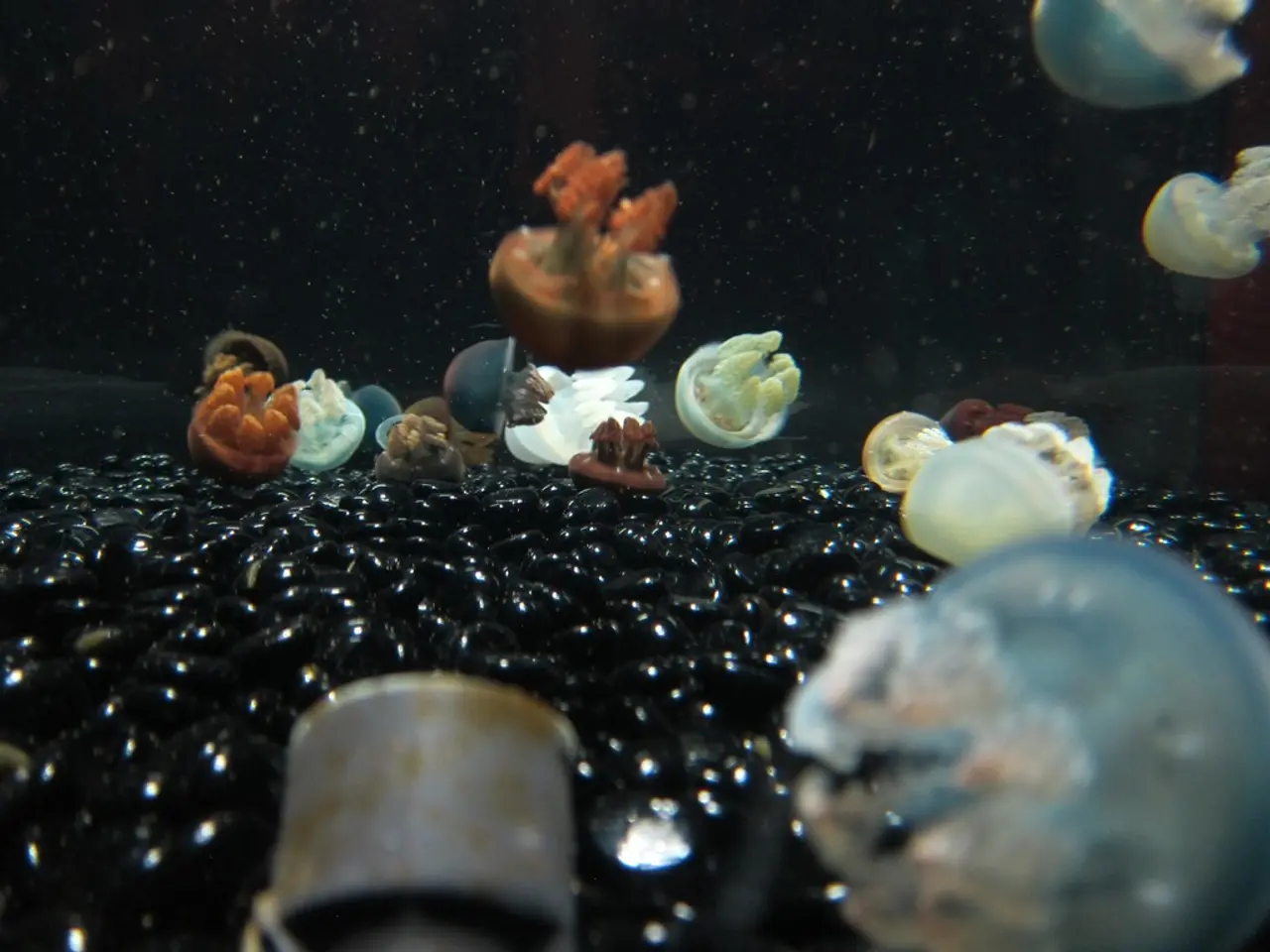Bacterial Contagion Rapidly Spreading in the Baltic Sea Waters
As summer approaches and more people flock to the Baltic Sea for a well-deserved break, it's important to be aware of the potential risks associated with the region's bacterial outbreaks, particularly those involving Vibrio bacteria.
The Baltic Sea, a popular summer destination for many, offers cooling relief, but this comes with a risk due to the bacteria plague that has been detected in the water for several years. The European Centre for Disease Prevention and Control has classified the Baltic Sea as a risk area, highlighting the seriousness of the situation.
To minimize the risk of serious infections, it's crucial to take several precautions. Firstly, avoid swimming with open wounds or cuts, as Vibrio bacteria can enter the body through broken skin and cause severe soft tissue infections. Secondly, be cautious with water temperature and conditions, as the bacteria thrive in warmer sea temperatures, which may increase their concentration during summer months.
Showering immediately after swimming is also recommended to rinse off any bacteria that may be on your skin. If you develop symptoms such as redness, swelling, pain, fever, or lesions after swimming, seek prompt medical attention. Local health advisories should also be checked, as authorities often monitor bacteria levels and issue warnings or closures of beaches if Vibrio outbreaks are detected.
Although Vibrios can have serious consequences, actual infections are rare. Initially, the signs of a Vibrio infection are usually strong, locally limited pain disproportionate to the visible wound. Last year, two people died from an infection with Vibrios - an 81-year-old and a 59-year-old man.
The low salt concentration and persistently high water temperatures in the Baltic Sea contribute to the facilitation of bacterial growth, specifically Vibrios. The Baltic Sea is not the only area where Vibrios are present; they are also commonly found in some parts of the North Sea and enclosed bathing areas, especially in warmer conditions.
Despite these concerns, the Baltic Sea remains a beloved summer destination for many Germans, who go there to escape everyday life and soak up the sun. However, it's essential to remember that the bacteria plague at the Baltic Sea poses a danger to all bathers who are not careful.
In summary, maintaining intact skin barriers, monitoring local advisories, practicing personal hygiene after swimming, and promptly addressing any suspicious skin symptoms are crucial precautions when swimming in the Baltic Sea during such bacterial outbreaks. By taking these precautions, you can ensure a safe and enjoyable summer holiday.
[1] European Centre for Disease Prevention and Control. (2020). Vibrio infections in Europe. Retrieved from https://ecdc.europa.eu/en/healthtopics/vibrio_infections/Pages/vibrio-infections-in-europe.aspx [3] World Health Organization. (2020). Vibrio infections. Retrieved from https://www.who.int/news-room/fact-sheets/detail/vibrio-infections
- While enjoying the health-and-wellness benefits of the Baltic Sea, it's crucial to also prioritize mental-health, practicing stress-reducing activities like yoga or meditation to counter any anxieties about potential bacteria risk.
- Before venturing into the Baltic Sea, consider adopting a balanced nutrition plan rich in nutrients that boost your immune system, such as fruits, vegetables, whole grains, and lean proteins, to bolster your defenses against bacterial contamination.
- Expanding your interests during summer holidays isn't limited to swimming and sunbathing; you could explore other science-related activities, like visiting local fish hatcheries to understand the role of nutrition in supporting marine life or attending lectures on skin-care practices that protect your body from waterborne bacteria.





